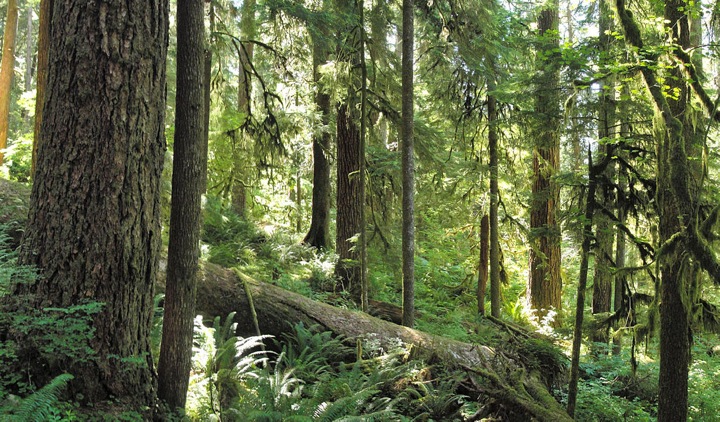By Katrina Marland
This marks our first blog post in the month of April, a time known around here (and hopefully where you are, too) as Earth Month. Since this is supposed a time when everyone is more aware of the challenges facing our environment, we are going to use our Monday posts this month, plus Melinda’s regular guest blog, to highlight what we think are some of the most significant ways forests affect our lives: water, wildlife, recreation, urban forests, invasive pests and today’s topic of choice, climate.
Climate and forests are two things you really can’t separate. There are a number of ways in which forests dictate and stabilize a region’s climate. And there are countless ways in which the destruction of forests contributes to global climate change. I choose, however, to focus on the fact that forests may yet be one of the major players in saving us from this mess of our own making.
A recent study of Oregon’s Klamath-Siskiyou region by the Geos Institute shows that large, old-growth stands will likely stand against the planet’s warming climate longer than other areas and offset its effects better than most. The forests’ size, closed canopy and well-established location mean that they can provide a greater cooling effect for the surrounding area, preventing the warmer climate from turning snowpack into floods or burning off the fog that is vital to some coastal forests. The extra stability that these forests provide means that they can also act as refuges for species that are fleeing changes to their own native habitat.
That these forests can, in a warming climate, function both as air conditioners and oases for the local ecosystem is of great value to humans as well, both those who live nearby and those who don’t. As we continue to see in the environmental news world, each time one part of a system starts to fail, it causes a ripple effect that spreads far beyond its original range. This is why, for example, an increase in temperature atop a mountain in Wyoming can mean less water for crop irrigation in southern California. Everything is connected, and these old-growth forests may be our best bet to hold it all together while our climate is in flux.
To learn more about how climate and forests are connect, visit our Forests & Climate Change page.
